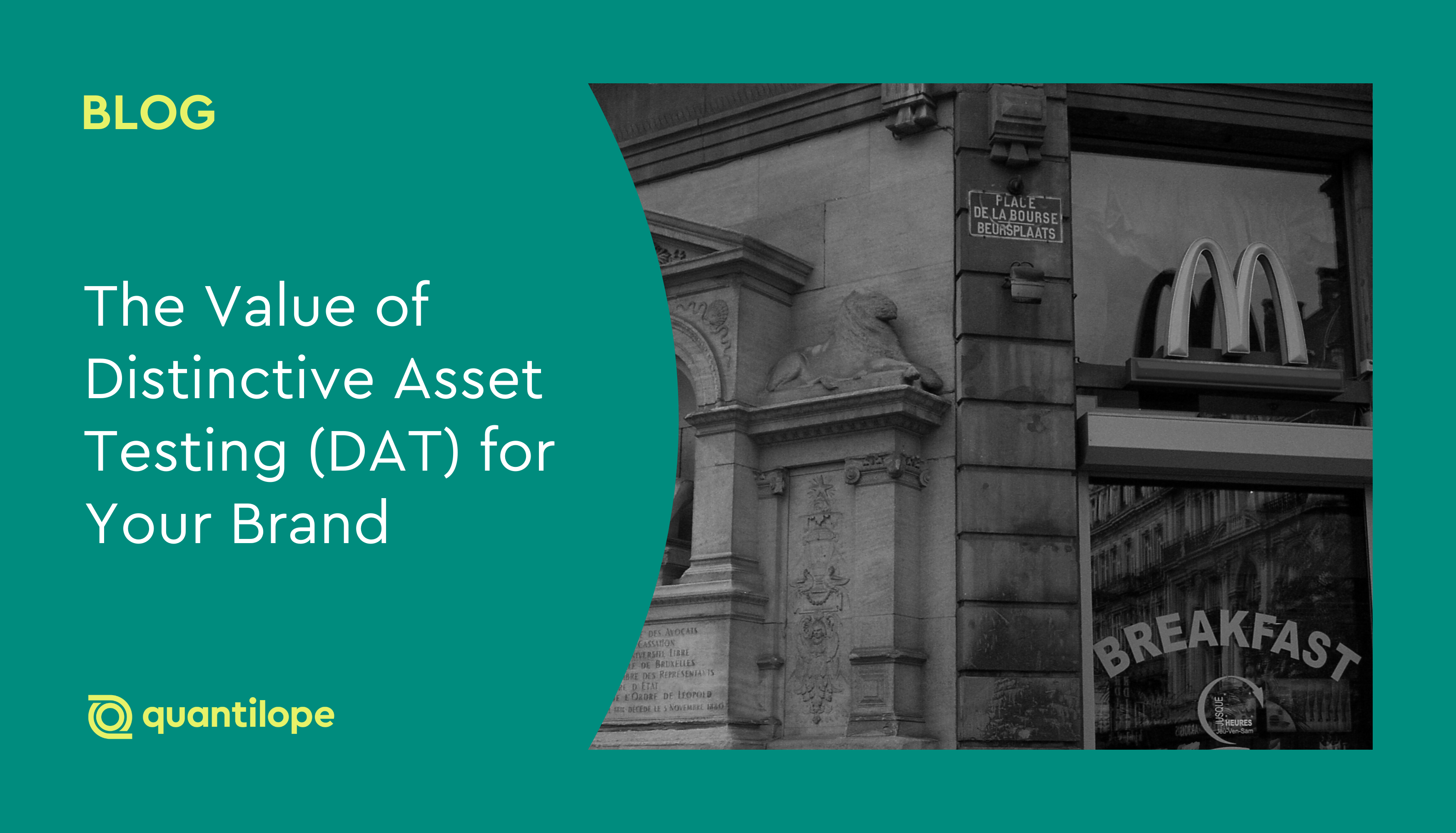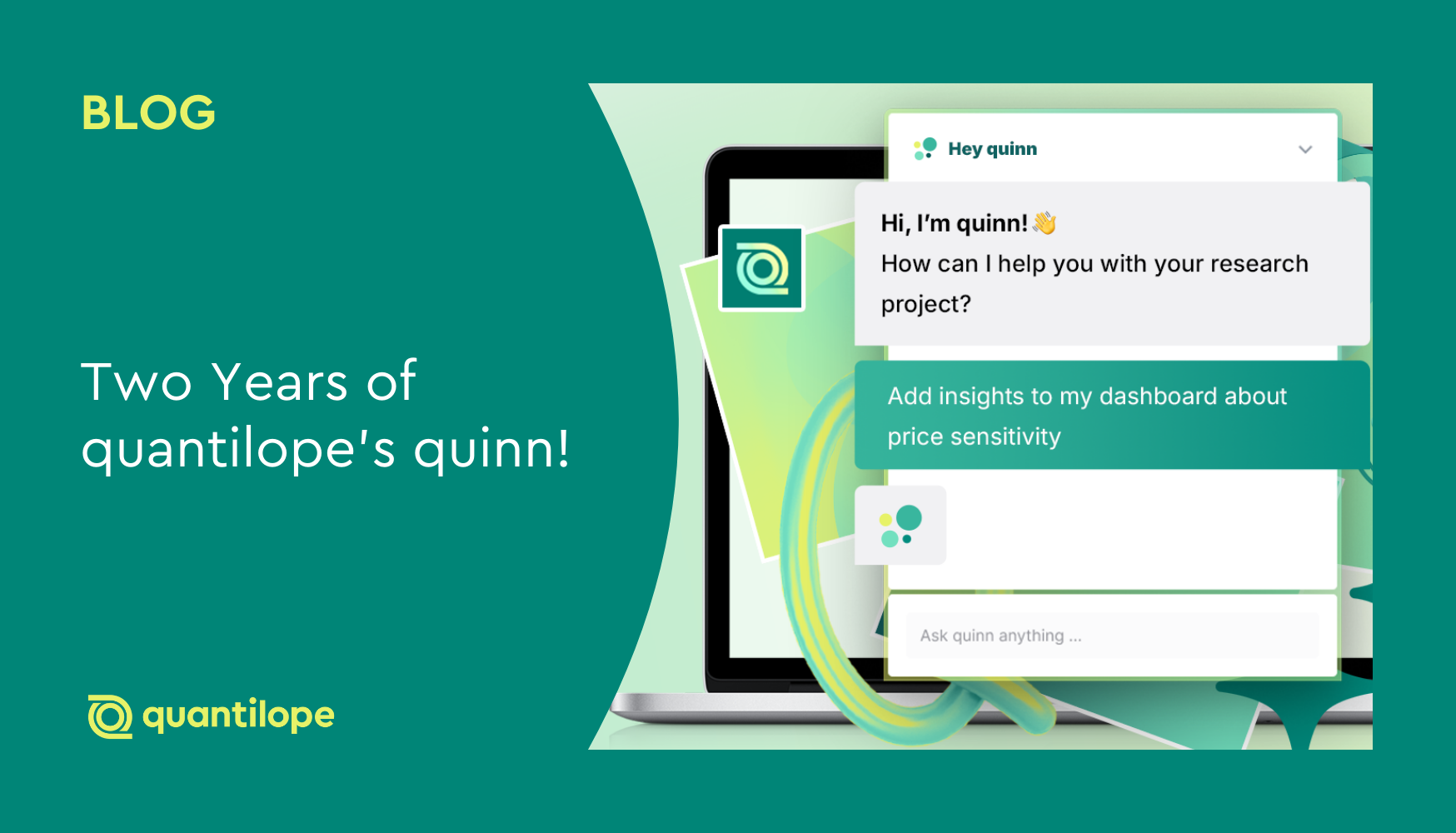This blog explores Distinctive Asset Testing – a strategic market research tactic to test brand assets and see if they accomplish what your brand intended them to.
Table of Contents:
What is a brand asset?
Imagine you’re traveling in a foreign country where you don’t speak the language. You’re walking down a busy street (like the one pictured below) with tons of restaurants and signs. There’s a lot of information to process and you’re feeling a bit overwhelmed, not knowing where to focus.

Take a second to look at the image above - what stands out to you? If you’re like most people, you probably immediately noticed the McDonalds logo - because it is familiar, recognizable, and likely has at least a couple of associations for you. This is just one example of a brand asset.
A brand asset is any element of a brand's identity (besides the brand name) that signals the brand to consumers. Brand assets could be color combinations, slogans, music/sounds/jingles, logos, characters or mascots, celebrity partners, pack shapes, fonts, and more; regardless the form, they serve as an anchor in consumers' memories, allowing them to create linkages between a brand and advertising or mental associations.
Thinking again about the example shown above, this really shows the power of branding and brand assets – as a way to cut through the clutter and stand out in our modern world where we see hundreds of ads and brand elements every single day.
Back to Table of Contents
What is a Distinctive Asset?
Meanwhile, Distinctive Assets (DAs) are brand assets that effectively and exclusively communicate the correct brand to the vast majority of consumers (think the McDonald's golden arches, the Nike Swoosh, or the GEICO gecko).

Examples of a few types of brand assets.
Other types of brand assets include Jingles, fonts, celebrity partnerships, pack shapes, and color combinations.
DAs are incredibly powerful branding tools as they can start to be used in lieu of the brand name. However, developing DAs requires a long term commitment from marketers - it takes time and consistency to form a strong and authentic linkage between a brand and an asset.
Back to Table of Contents
Why are brand assets important?
Brand assets are essential for brands to make sure their branding is effective. Proper branding helps communicate brand ownership of a product or occasion, anchors knowledge in consumers' memories, and, as Jenni Romaniuk (Professor at the Ehrenberg-Bass Institute (EBI) for Marketing Science) frames in her book Building Distinctive Brand Assets (2018): “brings the mind and the shelf closer together”. If a brand is using an asset on packaging or in advertising, but it doesn’t effectively communicate the brand to consumers, it’s a waste of valuable marketing budget and resources.
Developing DAs allows a brand to increase their advertising footprint, generate alternatives to directly showing their brand’s name, and improve in-store performance by linking assets that are used in advertising to those that are used on packaging. Overall, DAs help brands maximize brand growth by identifying the types of assets, colors, characters, logos, and audio options (such as a jingle or Netflix’s distinct ‘ta-dum’ intro), that helps foster Mental Availability and Physical Availability. Each type of DA has a unique benefit, such as how audio is becoming more prominent for TV and social media platforms like TikTok, while colors can help brands stand out on shelves in a store.
Back to Table of Contents
How can you make sure your brand assets are effective?
To make sure that your brand assets are working effectively for your brand, you first need to test them! Professor Romaniuk’s testing framework starts with showing respondents an unbranded version of an asset (i.e., the logo with the brand name removed) and asking for their unaided recall of the brand that it is associated with. Respondents are able to provide one or multiple brands per asset, or indicate that they don't associate any brands with that asset. This allows for the most accurate data quality, as respondents are providing their fully unprompted memories of branding.

The unaided responses to each asset are then translated into two core KPIs that are used to evaluate the effectiveness of an asset:
- Fame: Mentions among total respondents
Measures how recognizable an asset is and is measured by the percent of consumers who correctly identify an asset with the target brand. For example, if there are 100 respondents and 50 of them mention the correct brand (even if they also mention other brands), the Fame score is 50 divided by 100, or 50%
- Uniqueness: Mentions among total mentions
Measures how well the asset is at only triggering the target brand. It is measured by the percent of all brand mentions that link the asset to the correct brand. For example, if there are 100 respondents and all 100 of them mention the correct brand, but also mention one additional competitor (200 total mentions), the Uniqueness score is 100 divided by 200, or 50%
To visualize the results of the Distinctive Asset Testing (DAT), these two KPIs are then plotted against each other on a quadrant chart (like the one shown below), with Fame along the Y axis and Uniqueness along the X axis. While it may be a lofty goal, the overall target for any asset should be to hit a score of 100% on both KPIs, which Professor Romaniuk says is feasible for any brand and any asset type. Although it may be helpful to benchmark against competitors for counter-programming purposes, when it comes to setting goals for a brand’s assets, the aspiration should always be for universal recognition and uniqueness.
Depending on the placement of the asset within the quadrant chart, there are different recommendations and actions that the EBI recommends brands take. For example, an asset with high uniqueness and low fame would be considered ‘Investment Potential’, meaning the asset has strong potential but needs to be used more broadly in advertising to increase overall recognition. See the chart below for the high level strategy that a brand should take for an individual asset, depending on its placement in the quad chart.

Many marketers might think that they don't need to test their DAs because they have a good understanding of Fame and Uniqueness. However, new research shows that only 2% of marketers can correctly guess their assets' Fame and Uniqueness scores. More than half of marketers were not even able to place their assets in the correct strategic quadrant - as they were consistently overestimating the Fame of their assets. This proves that consumer research is essential for marketers to effectively manage their brand assets.
Like many of the platform’s other solutions, quantilope offers a template for Distinctive Asset Testing (DAT) that follows the EBI’s best practices and recommendations. By following the EBI's approach, quantilope allows brands to test 10-15 of their brand assets, as well as competitor assets, to understand which assets they can use, which assets have potential, and to identify benchmarks for their assets – all to assess the effectiveness of future asset building activity.
Back to Table of Contents
How to improve Fame and Uniqueness
The key to improving Fame is simple, but requires a strong media investment and consistent branding. It's all about the co-presentation of your assets with your brand name, and the increased frequency of those assets across channels. The more often consumers see your brand asset(s) alongside your brand name, the more likely they are to remember it. Of course, your usage of the Brand Asset needs to be prominent enough in advertising to cut through distractions, and the execution efforts need to be strong, but overall, the best and simplest way to improve Fame is consistent usage in advertising.
Uniqueness is harder to improve, as it can be challenging to break existing connections between a consumer and competitive brands. Since Uniqueness is calculated based on total brand mentions, a key factor in building Uniqueness is the number of ‘free brains’ (in other words, respondents who currently have no links with an asset). It's also important to consider competitors with substantial mentions for an asset, as it will be harder to build Uniqueness if another brand already holds a sizable share. Before investing substantial resources into building Uniqueness, consider the general rule that you should have substantial ‘free brains’ in the category and that no competitive brand has 20% or more of your asset’s Uniqueness score. Otherwise, it’s going to be incredibly hard to build Uniqueness for that asset and your resources might be better leveraged elsewhere.
If there is an opportunity to grow Uniqueness, you’ll need to create specific links between your brand and an asset. Simply showing the asset more often won’t be enough: as long as your competitors are using similar assets in their marketing, they’ll be stealing a share of consumers' minds. One potential solution is to refine the asset and make it more unique. Make sure to keep the core of the asset consistent, but consider ways you can start to differentiate it slightly from competitors.
Back to Table of Contents
What does Distinctive Asset Testing look like in practice?
Below is a real example of a quantilope-run DAT in the Car Insurance category. Let’s take a look at Liberty Mutual’s performance on Fame and Uniqueness.
In the chart below, we can see that all of Liberty Mutual’s assets fall into either the ‘Use or Lose’ or ‘Investment Potential’ quadrants. This begs the question: If all of their assets have potential, where’s the best place to start?

The EBI recommends brands start by trying to get their ‘Use or Lose’ assets to be as close to 100% on each KPI as possible. This means Liberty Mutual should start by strengthening their logo and their characters (LiMu Emu and Doug) through increased co-presentation with the brand name, so that they become universally recognized. From there, the EBI recommends creating a Brand Asset ‘Palette’ that builds neurological diversity (i.e., activates different senses and parts of the brain) and can be used across a variety of media channels. Looking at the chart above, Liberty Mutual could even consider layering in an audio asset to compliment their two visual assets. While the Liberty jingle has stronger uniqueness, the tagline could also be considered for audio if it has better longevity for the brand and aligns more with longterm strategy.
As another example (below), Farmers doesn’t currently have any assets that perform strongly, but it does have two assets (the Farmers character and the logo) that are on the cusp of the Investment Potential quadrant.

Farmers should pause and assess the quality of these assets before deciding to prioritize them. If they decide to continue using both the character and the logo, both assets need to be used heavily and consistently in advertising to increase recognition. Farmers should also keep an eye on misattribution of the logo, as 15% of consumers currently associate this asset with State Farm instead of Farmers, likely due to the usage of similar shades of red.
Back to Table of Contents
Should my brand be running Distinctive Asset Testing?
Yes! Any brand putting substantial investment toward advertising and branding work should be involved with DAT to make sure their asset building activities are truly effective.
Get in touch below to learn more about how you can start testing Distinctive Assets for your brand!




.png)